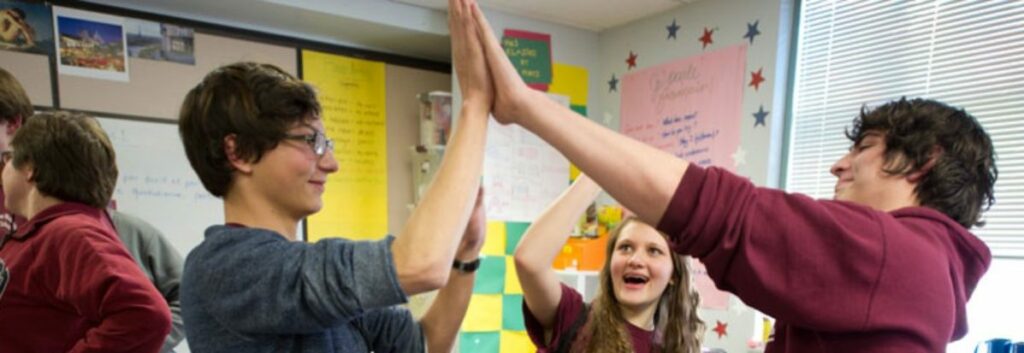One of the most significant ways that young people can exert control over their education is by having academic freedom. However, students can also be active participants in their education in other ways, ranging from choosing which learning environment suits them, to being able to participate in the school board, to having a say in school policies. Such involvement in decision-making empowers students with the ability to influence their schools and their educational experience.
School discipline
Some schools have implemented programs such as restorative justice, in which students come up with their own solutions when they’ve been hurt by other students. This new approach to disciplinary policy began as a unified effort between students, educators, and parents to provide a healthy alternative to “zero tolerance” policies that treat students like criminals rather than giving them the tools and resources to be successful both inside and outside the classroom. Restorative justice programs have fostered lasting relationships between students and teachers, and have motivated students to become engaged in their learning experience. This new approach to school discipline has already taken root in 21 Oakland schools, including Ralph J. Bunche High School, which has seen its suspension rate drop from 12% to 8% in one year. It has served as a testament to the meaningful role that students can play in their own education. It also shows that students can become involved in school policy and take steps toward taking control of their learning environment.
Lunch menu options
Students rightfully want control over what goes into their bodies. Unfortunately, schools and federal regulations have tried to restrict the food students can access. In response, students have protested decreases in caloric content of lunches and even organized boycotts. Sometimes students are allowed to weigh in on their cafeteria menu—though they almost never have the final say. Orange County Public Schools, in an attempt to give students increased control over what goes into their bodies, have begun hosting Student Food Shows. During these events, 400 elementary, middle, and high school students are invited to sample potential additions to school menus. Those items with the highest approval rating are taken into further consideration by the county before a final decision is made. Offering nutritious food in schools is immensely important, but healthy students don’t just have access to wholesome meals—they also have choices.
Hiring and firing teachers
Students are the ones who benefit when teachers do their jobs well, and suffer when they do them badly. For this reason, students are in a unique position to contribute to hiring and firing decisions. Democratic schools have taken this into account by creating a procedure for the re-hiring of staff in which students are directly involved. All students and staff members are given one vote each in a school meeting where a majority is required in order for each staff member to be re-hired for the upcoming academic year. Sudbury Valley School in Framingham, Massachusetts, is an example of a democratic school, which grants students complete control over rules and how they are enforced. This school is governed by both its staff members and students, with each voice given equal weight. Children and youth are also far more competent at making decisions than most American adults give them credit for. They can even serve on judicial committees, which address student and staff misconduct.
Student panels are becoming more common in schools. Although some adults think that allowing students a role in the hiring process is demeaning and ineffective, others believe that students can offer a valuable perspective. One principal said that in his experience, students are able to offer important insights into who would make a good teacher, and are not swayed by frivolous promises. The rising popularity of student panels is part of a larger movement that aims to give students more autonomy over their education. While this may seem like a radical idea in America, students at a school in the Australian state of Victoria have been involved in the hiring of teachers for over six years. This hiring method involves having students as young as 13 years old conduct 15-minute interviews with prospective teachers. By giving students a voice in decisions that affect them, the school has been able to build an environment of mutual respect between students and faculty.
Starting times
School should begin at a time that fits into students’ schedules. This is important both for their lives and responsibilities outside of school and especially for their health. Sometimes students feel that their school days start too late, while others feel that their schools start too early. Either way, students should be the ones who decide what time their school day begins.
Students in Montgomery County, Maryland, appeared at a school board meeting in their pajamas to protest their school’s early start time. They also gathered outside the Carver Educational Services Center, where the school board was meeting, carrying signs and calling for the board to reconsider their decision to forgo pushing back high school start times 50 minutes. These protesters also started a petition in favor of Montgomery County High School students beginning at 8:15 a.m. More than 11,700 people have signed this petition.
Off-campus policies
Students have also fought against closed campus policies that don’t allow students to go off-campus for lunch or check themselves out, even if they are 18 years old. Students should be able to exercise freedom of movement. After all, how are schools expected to prepare students for the real world if they are constantly sheltered? Forbidding students to leave campus may seem like a form of protection, but it perpetuates the mostly false notion that high school student—many of whom have their own cars and jobs—aren’t capable of handling responsibility. These policies can also foster a stressful school community, because students are forcefully kept in a busy learning environment all day long. In the adult world, most employees are not forced to remain in their places of employment during lunch, and the same should be true for high school students. Allowing students to leave campus for lunch might offer relief. As one high school student with the right to leave for lunch put it, “For me, it was really great because I don’t like to be cooped up inside . . . It gave me a little mental break.”
Some students have successfully petitioned their schools to change closed-campus policies by taking part in school board meetings to protest their school’s policy that closes the campus at lunch. Others have walked out of classrooms and cafeterias in protest of their school’s closed campus policy. These students gathered on the front lawn of the school to hold a peaceful demonstration and voice their displeasure at the proposed closed-campus policy. Students were also able to discuss this issue at a student government-run forum in which school administrators took part.








